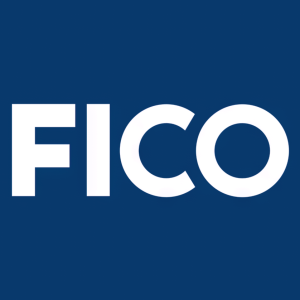FICO Report Finds Consumers Are Expecting More Personalized Service from Their Financial Service Providers to Secure Their Financial Future
FICO's latest report reveals significant changes in consumer financial behaviors since 2020. The survey indicates that 56% of U.S. banks and 69% of credit unions are undergoing digital transformation. Notably, the share of younger consumers using digital banks has risen to 12%. The report emphasizes the need for banks to adapt to new customer expectations in five areas: overdraft, saving and investing, buy now, pay later, niche neobanks, and open banking. Traditional banks are encouraged to rethink their services to foster long-term loyalty.
- 56% of U.S. banks and 69% of credit unions are implementing digital transformation.
- 12% of younger consumers now consider digital banks their primary checking account provider, over double the percentage since 2020.
- 70% of banks and 76% of credit unions do not plan to replace their core systems during digital transformation.
The survey demonstrates a dramatic shift in financial behaviors of primary bank and credit union customers since 2020
Highlights:
- FICO today released a new report examining consumers’ shifting financial behavior and priorities.
-
56% ofU.S. banks and69% of credit unions claim they are implementing digital transformation. - Banks must continue to evolve to match five specific areas to meet customers' new expectations: overdraft; saving and investing; buy now, pay later (BNPL); niche neobanks and open banking.
Consumers today expect financial providers to deliver a personalized experience with offers and solutions that help them secure their financial future. The report examines how traditional banks need to adapt to deliver better value to today’s digital savvy customer while highlighting specific fintech examples of tailored services to niche customers, such as helping them blend savings and investing together. While the report does not suggest that banks and financial institutions mimic the approach fintechs are taking, it urges them to change the way they think and alter their approach to be more customer centric.
“U.S. consumers are increasingly exploring new services from fintechs to meet their ever-evolving financial needs,” said
The report, Counterattack: Banks Field Guide to Fintech Disruption, compiled by
The research noted that
“While banks are responding to fintechs, too much of the focus has been on making incremental improvements to existing products and service,” said
The research indicated that banks have an opportunity to counter the following five specific competitive threats by
-
Regarding overdrafts,
U.S. neobanks have made fee-free overdraft protection a central and highly visible product feature, with Chime as a neobank that offers a feature called SpotMe, which covers up to$200 - Regarding saving and investing, the two most popular fintech apps that consumers use to automate savings or encourage them to save more money as well as invest are Acorns and Stash, as they combine automated savings capabilities with portfolio and fractional stock investing that emphasizes diversification and encourages long-term investing over day trading.
-
Regarding the explosive popularity of buy now, pay later (BPNL), the percentage of Gen Zers making purchases with BNPL plans grew six-fold between 2019 and 2021 – from
6% to36% . - Regarding niche neobanks, the next generation of consumer-facing fintech companies is focused on a specific segment of consumers that share a common set of functional and emotional needs when it comes to money.
-
Regarding open banking, or the ability for consumers to share data from their financial accounts and providers to enable other products or experiences,
76% of consumers consider being able to connect their accounts to apps as a top priority, and69% would switch banks to do so.
“The good news is that our research revealed that banks don’t need a wholesale digital transformation; they can pick their battles when it comes to answering threats,” added Behl.
For more details and insights regarding the survey results:
- Download and view the Counterattack: Banks Field Guide to Fintech Disruption.
About FICO
FICO (NYSE: FICO) powers decisions that help people and businesses around the world prosper. Founded in 1956, the company is a pioneer in the use of predictive analytics and data science to improve operational decisions. FICO holds more than 200 US and foreign patents on technologies that increase profitability, customer satisfaction and growth for businesses in financial services, telecommunications, health care, retail, transportation and supply chain, and many other industries. Using FICO solutions, businesses in more than 120 countries do everything from protecting 2.6 billion payment cards from fraud, to helping people get credit, to ensuring that millions of airplanes and rental cars are in the right place at the right time.
Learn more at http://www.fico.com.
Join the conversation at https://twitter.com/fico & http://www.fico.com/en/blogs/.
For FICO news and media resources, visit www.fico.com/news.
FICO is a registered trademark of
View source version on businesswire.com: https://www.businesswire.com/news/home/20220510005564/en/
Media Contact:
Katie O’Connell
press@fico.com
+1 510-621-9832
Source: FICO
FAQ
What does FICO's recent report reveal about U.S. banks' digital transformation efforts?
How has consumer preference for digital banks changed according to FICO?
What areas must traditional banks evolve in according to FICO's report?
Why should banks focus on analytics and personalization, as mentioned in FICO's report?







